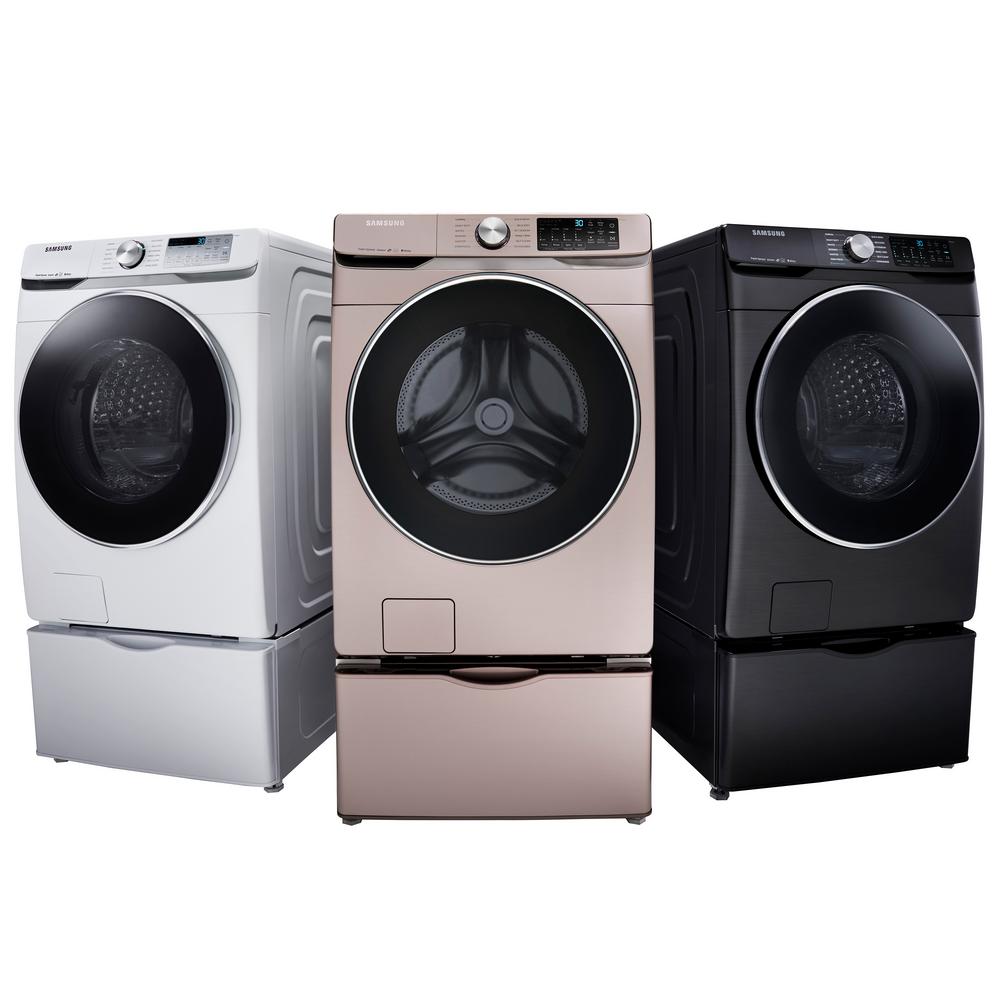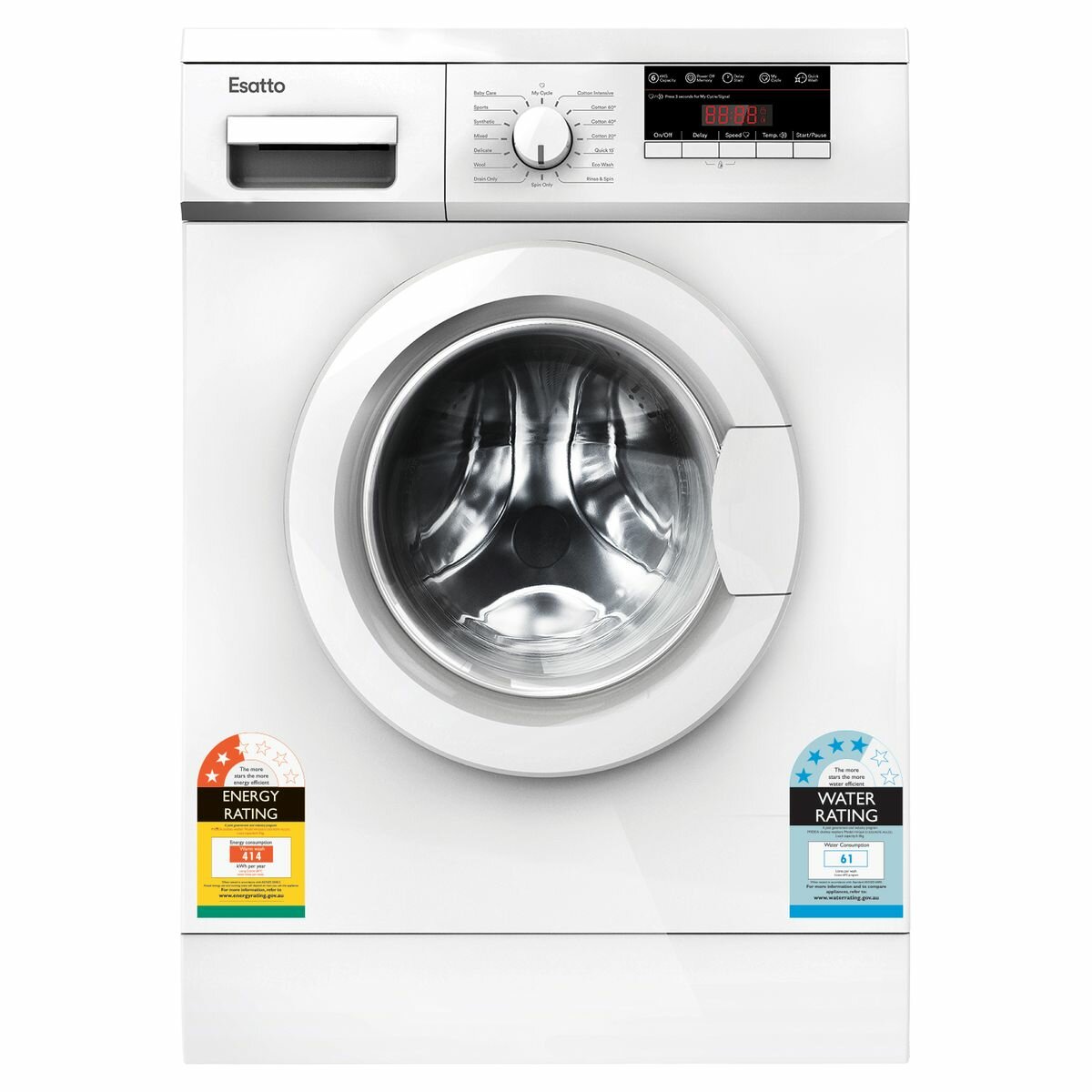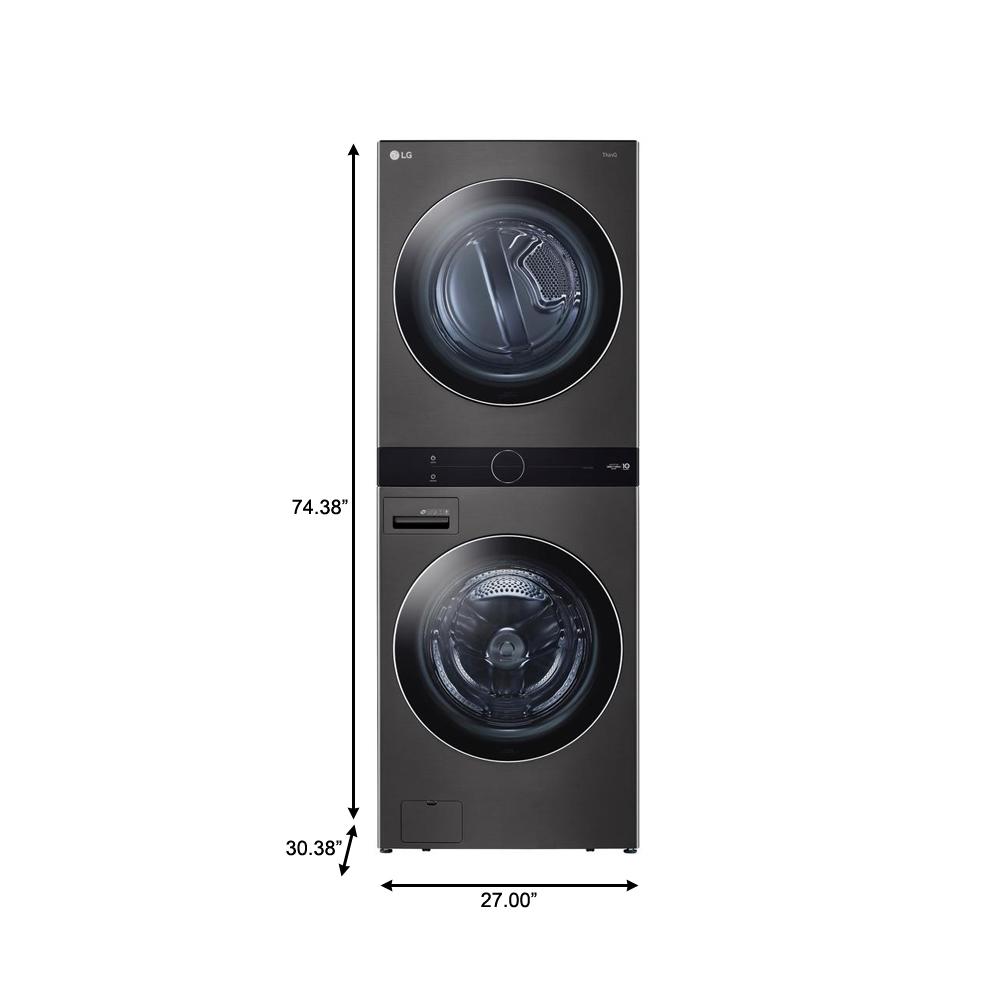Samsung 5.0 cu. ft. Hi-Efficiency Fingerprint Resistant Black Stainless Top Load Washing Machine with Super Speed, ENERGY STAR
Super Speed: Fast, thorough washing in just 36 minutes. Pairs best with Electric DVE50R5400V or Gas DVG50R5400V Dryer(s). Active WaterJet: Built-in water faucet for easy pretreating.
Samsungs 5.0 cu. ft. capacity top load washer features Super Speed technology, which allows you to wash a full load in just 36 minutes1 without sacrificing cleaning performance. It is also equipped with Active WaterJeta built-in faucet that lets you pretreat stained clothes with a press of a button and an EZ Access tub design that allows you to easily reach the bottom of the washer tub, stretch free.
- Super Speed – Uses advanced cleaning technologies to wash a full load of laundry in just 36 minutes1, without sacrificing cleaning performance
- Active WaterJet – Built-in water faucet lets you easily pretreat soiled or stained clothes with a press of a button
- New EZ Access tub design allows you to easily reach the bottom of the washer tub to remove your clothes after the cycle finishes
- Deep Fill -Choose to maximize the water level used during the washing cycle
- Smart Care -Easy troubleshooting from the convenience of your smartphone2
- VRT Plus Technology -Reduces noise and vibration for quiet washing
- Swirl+ Tub Interior -Improved tub pattern extracts more water more quickly
- Self Clean -Keeps your washer tub fresh and clean
- Soft-Close Lid -Closes smoothly, safely, and silently
- ENERGY STAR Certified -Eco-friendly and energy-efficient
- Accessibility (AUI, Braille) -Designed for easy use for everyone
- 12 Preset Washing Cycles – More cycles to best suit your washing needs
- 8 Additional Washing Options – More options to enhance your washing cycle, providing optimal care for all fabric types
- 5 Temperature Levels -Select the ideal temperature to wash your clothes gently and thoroughly
- Matching Dryer: DVE50R5400V (Electric), DVG50R5400V (Gas)
- Based on using Super Speed on a Normal cycle with an 8 lb. load
- Requires Samsung Smart Washer/Dryer App. The Samsung Smart Washer/Dryer app supports Android OS 2.3.6 or later and iOS 3 or later for iPhone models. Smart Washer/Dryer App available in App Store and Play Store
Additional information
| Capacity - Washer (cu. ft.) | 5 |
|---|---|
| Height With Lid Open 90 Degrees (In) | 58.1 |
| Product Depth x Height x Width (in.) | 29.4 x 44.6 x 27.5 |
| Certifications and Listings | Energy Star,UL Listed |
| Manufacturer Warranty | One (1) Year Parts and Labor. Three (3) Years Stainless Steel Tub (Part Only). Ten (10) Years Direct Drive Motor (Part Only) |






by Lizzy
If I had my choice now I probably would have gotten the agitator instead of the infuser. But overall it does do a good job.
by Raymon
We are very pleased with this product.
by Susan
Washer is great. I can fit my king comforter in it